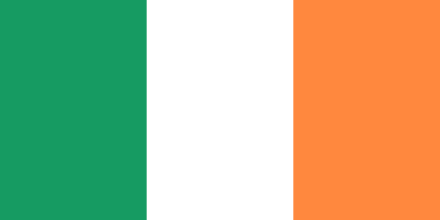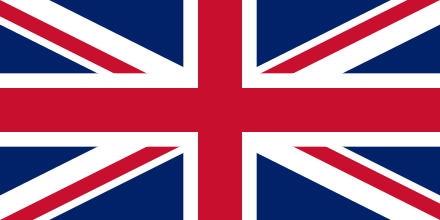It is said that healing is a matter of time. In the case of Ireland and Northern Ireland history has never been so part of the present. Their pursuit of harmony and unity is not yesterday’s news. They both share the same island, a common past and an identical language. Yet, they are two completely different entities. Which brings us to the question, Ireland vs Northern Ireland: What’s The Difference?
The main difference between Ireland and Northern Ireland relates to their political system since they are 2 different countries. Ireland (or Eire) is an independent sovereign state whereas Northern Ireland (also known as Ulster) is part of the United Kingdom, alongside England, Scotland, and Wales.
The two nations used to be one. Their separation, due to strong cultural, religious and governmental divergences, led to a series of gloomy episodes. Despite the Good Friday Agreement that ended the Troubles (1968-1998), Northern Ireland is still coping with finding its way. Ireland, on the other hand, seems to have struck a satisfying political balance.

Different Political Systems in Ireland and Northern Ireland
Ireland is defined as a parliamentary republic. The power of the nation is held by its citizen and their elected representatives. They are clearly defined by the following:
- The Head of State is the President of Ireland, directly elected by the people of Ireland. In 2018, Michael D. Higgins renewed his 2nd and last seven-year term of office.
- The Head of Government is the Taoiseach, also referred to as the Prime Minister. The Taoiseach is responsible for the first selection of the members of the Government. His/her choice is then confirmed by the Dáil before the final appointment by the President.
- The Executive Authority is given to the Taoiseach, the Tánaiste (deputy Taoiseach and member of the Dáil) and the cabinet of ministers.
- The Legislature is powered by the National Parliament, known as the Oireachtas. The Oireachtas is composed by:
- Dáil Éireann, one of the Oireachtas Houses. The Dáil nominates the Taoiseach.
- Seanad Éireann, the Senate, also known as the Upper House of the Oireachtas.
- The President, who selects the Taoiseach.
- The Judicial power is held by the Courts of Ireland. There are 4 major Courts:
- The District Court
- The Circuit Court
- The High Court
- The Supreme Court
Northern Ireland is a constitutional monarchy, also named a Limited Monarchy, and follows a consociationalism (shared power) form of authority, as follows:
- The Head of State is the British Monarch: Elizabeth II.
- This devolved government is run by the Northern Ireland Executive. Its Executive authority is jointly given to the First Minister and the Deputy First Minister. They are the Head of the Government. Both their chairs are assigned by the two largest political parties.
- The Legislature is powered by the Northern Ireland Assembly (NIA). The Speaker side by side with three Deputy Speakers preside this Assembly. 90 publicly elected members constitute the NIA (5 for each of the 18 constituencies).
- The Judicial Power is held by the Lord Chief Justice of Northern Ireland and the Courts. There are 3 major Courts:
- The Supreme Court of the United Kingdom
- The Court of Judicature (which includes the High Court, the Court of Appeal and the Crown Court)
- The County Court
To understand the controversy that inspired the establishment of those two distinctive political systems, we have to go back I time.

Key Historical Events
Both Northern Ireland and Ireland share centuries of common History. The island used to be one single territory and was one of the oldest colonies of the English Empire.
This 800-year old forced fusion between natives and newcomers induced decades of warfare that left a fracture that is still healing.
The division was political, religious and territorial. It led to acts of revolts such as the 1798 Rebellion or the Easter Rising in 1916. This ancestral relationship grew its people apart over the years. This rooted disconnection engendered several battles and key historical events.
The initial Norman settlers disembarked on the isle of Ireland in May 1169. The first military attack, supported by the pope Hadrian IV and Henry II of England, took place; defeating Ruaidrí Ua Conchobair, the High King of Ireland.
Two years later, King Henry dispatched an extensive Anglo-Norman army and established his commands over the colonized lands. The 1175-Treaty of Windsor recognized Henry’s suzerainty over those areas. It also certified an oath of fealty (pledge of allegiance) from the High King of Ireland.
The demand of marriage dissolution by King Henry the VIII with Catherine of Aragon was rejected by the Pope in 1527. The Reformation started.
The King wedded his dead brother’s wife and perceived his union as antithetical with the book of Leviticus. This annulment, disapproved by the supreme pontiff, led to the creation of the Church of England, and the rupture with the papal throne.
Despite an attempted “Catholic Crusade” by Lord Offaly, England claimed sovereignty. The Irish Parliament promulgated Henry the VIII, Protestant, King of Ireland, in 1541. New regulated systems, such as plantation, were then introduced. Estates were expropriated.
The Partition of Ireland occurred on the 3rd of May 1921, with the Government of Ireland Act 1920 (GIA). The Irish War of Independence that started in 1919, terminated with the signature of the Anglo-Irish Treaty in 1921. The Irish Free State dominion was then created, autonomous from the United Kingdom but still united to the British Empire.
Meanwhile, Northern Ireland took the option to opt out (as this decision was supported in the GIA) and remained part of the UK.
These Articles of Agreement generated a strong rivalry between the Pro and Anti Treaty. This animosity between both parties led to a second major conflict, known as the Irish Civil War in 1922. This deadly dispute ended with the victory of the Pro-Treaty in 1923.
In 1937, the 1st Constitution of the Republic of Ireland is introduced by Eamonn de Valera, the President of the 1st Dáil Éireann. This fundamental text of laws has been purposely elaborated to diminish the role of the British Empire.
In 1938, Douglas Hide becomes the first President of Ireland.
In 1949, The Republic of Ireland Act 1948 is signed by the President. This Act dismisses the remaining legal ties with the Crown. Ireland is officially independent.
In 2002, the Euro has replaced the Pound Sterling in the 26 counties that compose the democracy of Ireland. The 6 others, constituting Northern Ireland, remain with the Crown currency.
In January 2017, Northern Ireland faced the resignation of its Deputy Prime Minister, Martin McGuinness, and 589 days without a fully-operating government.
More differences between Ireland and Northern Ireland:
Languages
- Irish or Gaelic and English are the two official languages of Ireland.
- English is the official language of Northern Ireland. Ulster Scots and Irish are acknowledged as regional languages.
- The National Flag of Ireland, also referred to as the Irish Tricolour, was first adopted during the Irish War of Independence.

- Northern Ireland has an official and a non-official Flag: the Union Jack of the UK and the Ulster Banner
 |
 Capital Cities |
Capital Cities
- Dublin or “Black Pool” in Irish Gaelic, is the Capital of Ireland. It is the biggest city on the Island. It has the youngest population in Europe, with over 50% of its inhabitants under 25-year-old. It also has The Brazen Head, the oldest pub of the entire island. The cost of living is much higher in Dublin than in Belfast.
- Belfast is the Capital city of Northern Ireland. The world-famous Royal Mail Ship Titanic was built there by the local shipbuilders Harland and Wolff. The city encompasses the Obel Tower, the highest building of the island.
Religions
- The prevalent religion in Ireland is Christianity. The predominant church is the Roman Catholic Church.
- The main religion in Northern Ireland is Christianity as well however 42% are Protestants and 41% have faith in the Roman Catholic Church.
Size and population
- Ireland is 84,421 km² and is home to 4.8 million people
- Northern Ireland is 14,130 km² and is home to 1.8 million people
- There are also 1.8 million people living in Dublin!
Units of Measurement
- Ireland uses the Metric system. Their speed limits are indicated in kilometers per hour.
- Northern Ireland uses the Imperial system. Their speed limits are indicated in miles per hour.
- Make sure to know in which side of the border you are driving!
Dialing Codes
- To call Ireland dial first +353
- To call Northern Ireland dial first +44
There is a dialing code between both countries. To call Northern Ireland from Ireland dial 048 first. To call Ireland from Northern Ireland dial first 028.
Related Questions
What about Brexit?
The Northern Irish voted to remain part of the EU when the majority of the British Empire decided differently. Some political scientists predict that it can be a peace breaker, others that it will lead to the reunification of both nations.
Is Northern Ireland Safe?
Belfast is ranked as one of the safest cities in Britain by several newspapers and websites. Besides, tourism has been on a significant increase since 2011.
Sources
https://www.nisra.gov.uk/news/northern-ireland-annual-tourism-statistics-2017
https://passage.cappelendamm.no/c104241/artikkel/vis.html?tid=120161
http://www.citizensinformation.ie/en/justice/courts_system/courts.html
https://www.northernireland.gov.uk/
https://www.nidirect.gov.uk/articles/northern-ireland-executive

Just a note : it’s incorrect to refer to NI as Ulster. The province of Ulster is one of the four provinces of Ireland and is larger than just NI. It also includes some counties in the ROI, such as Doneg
Also the UK is not synonymous with the British Empire. The British Empire is a large, complicated network that includes a bunch of other countries.
Aside from that : good article though!